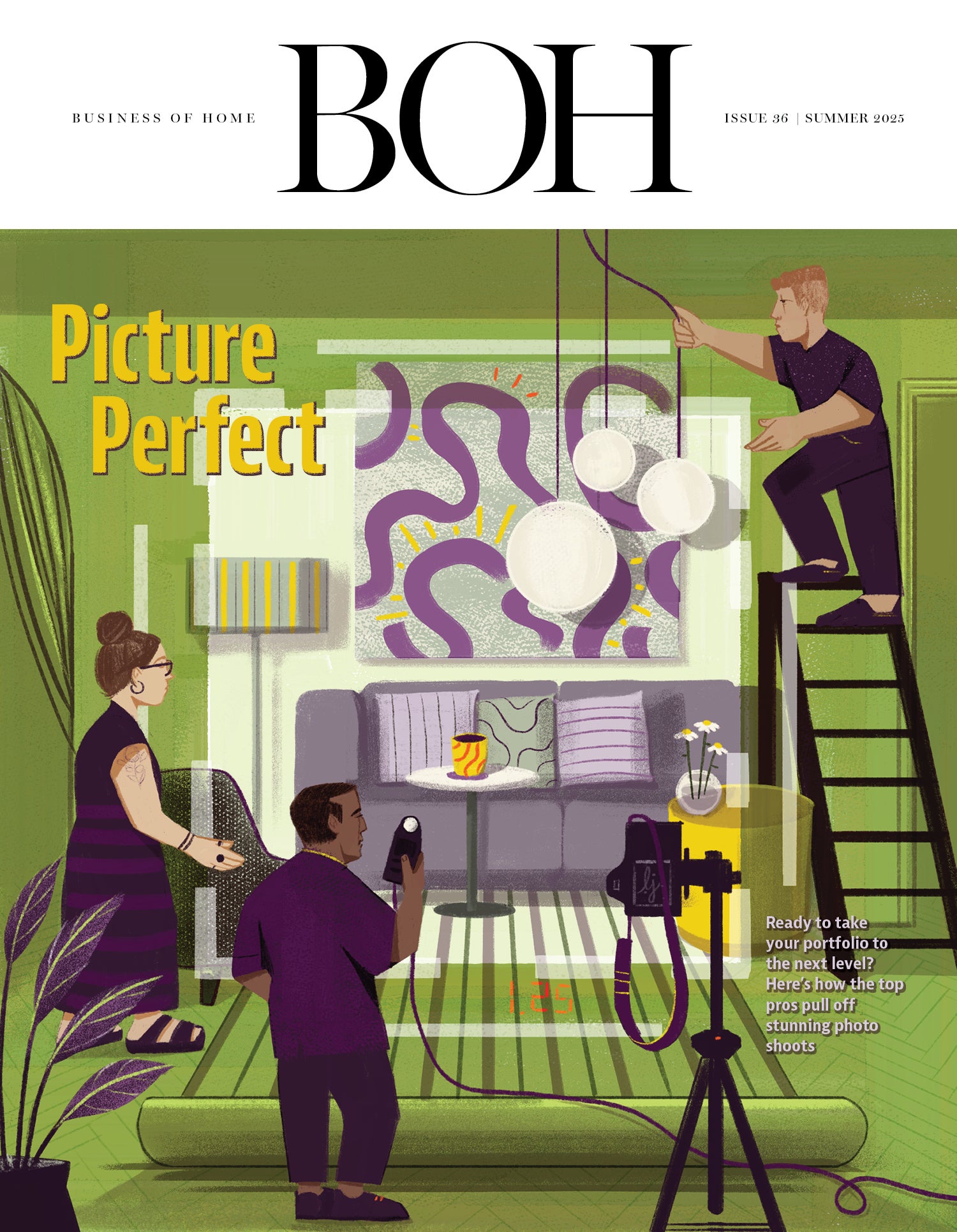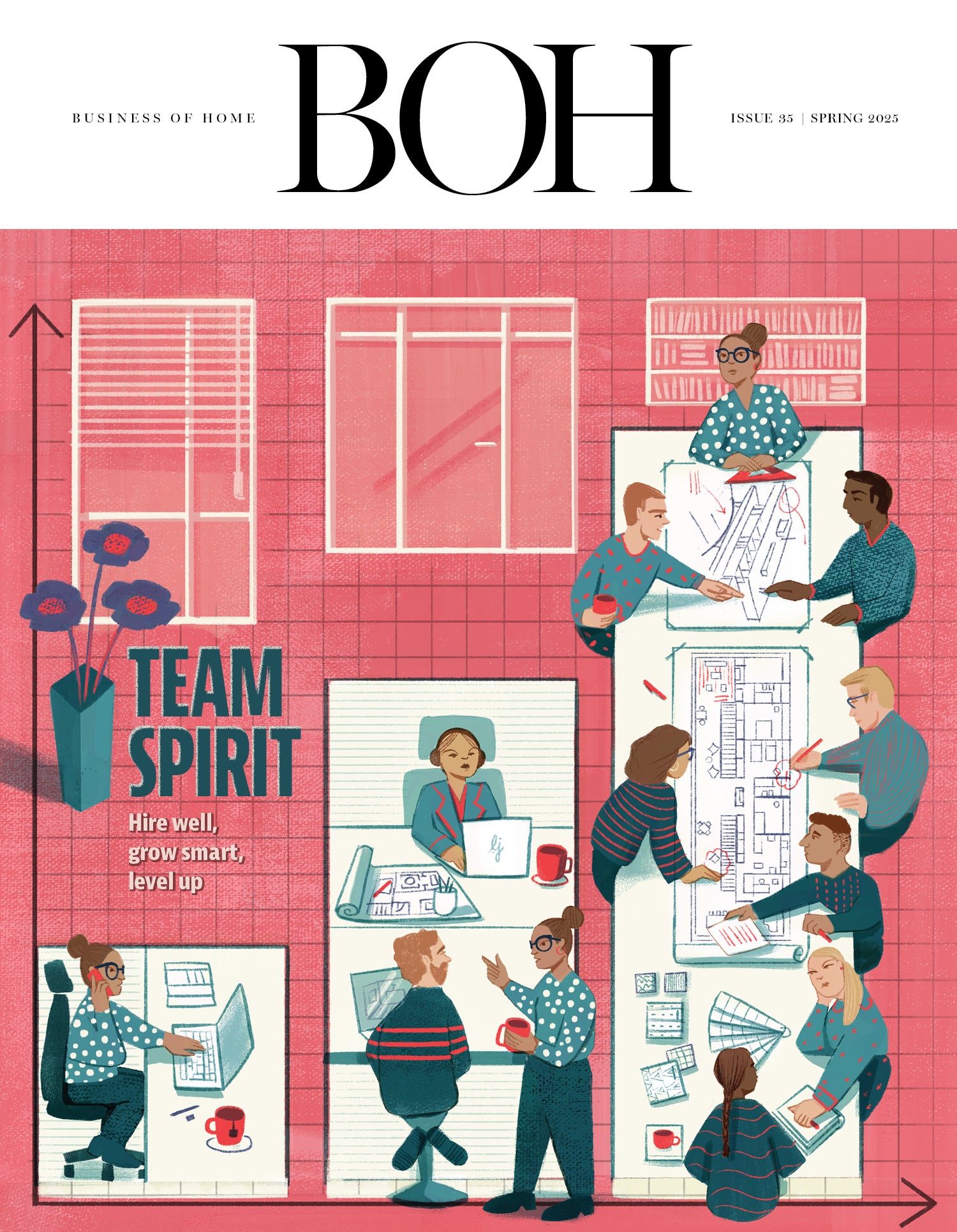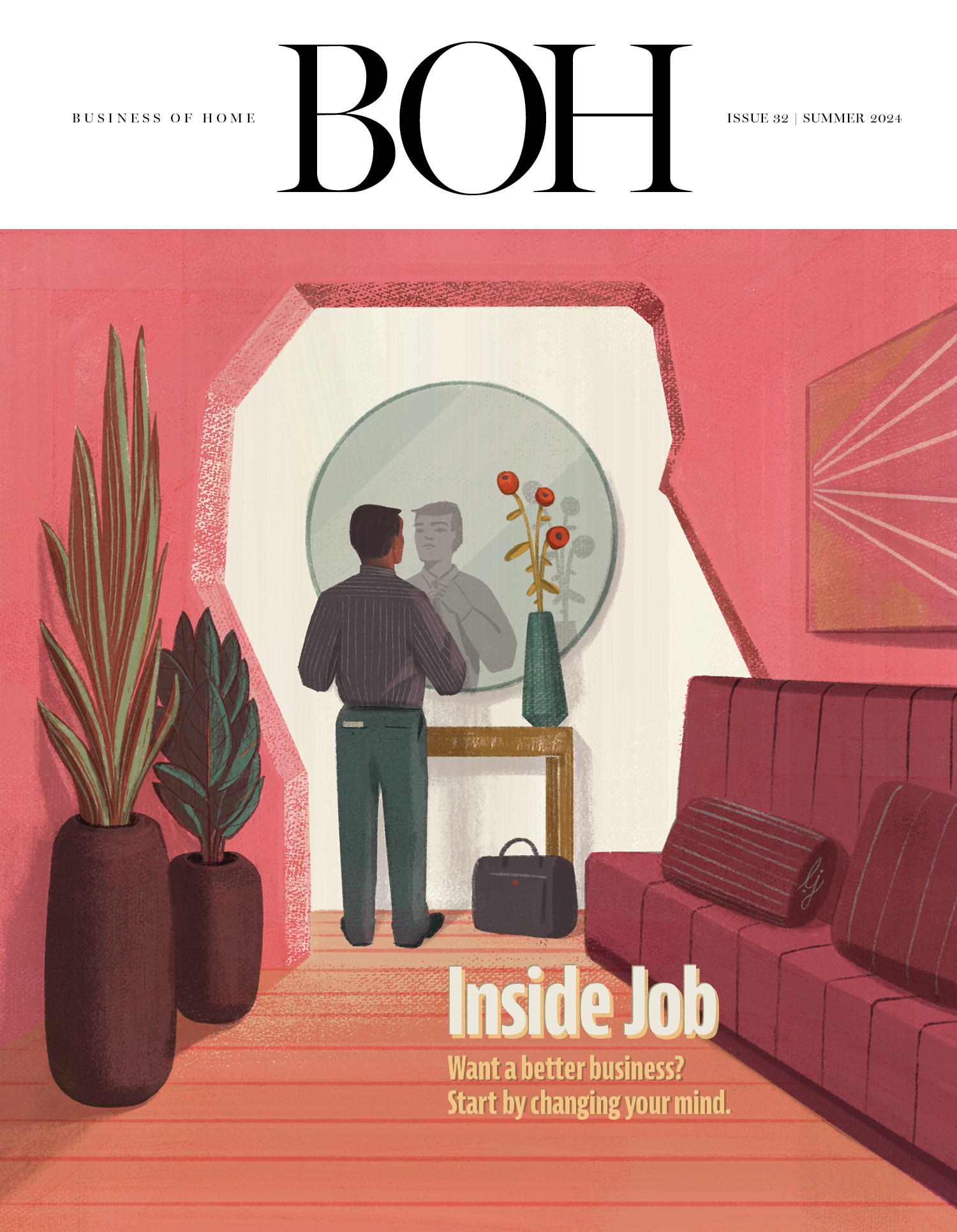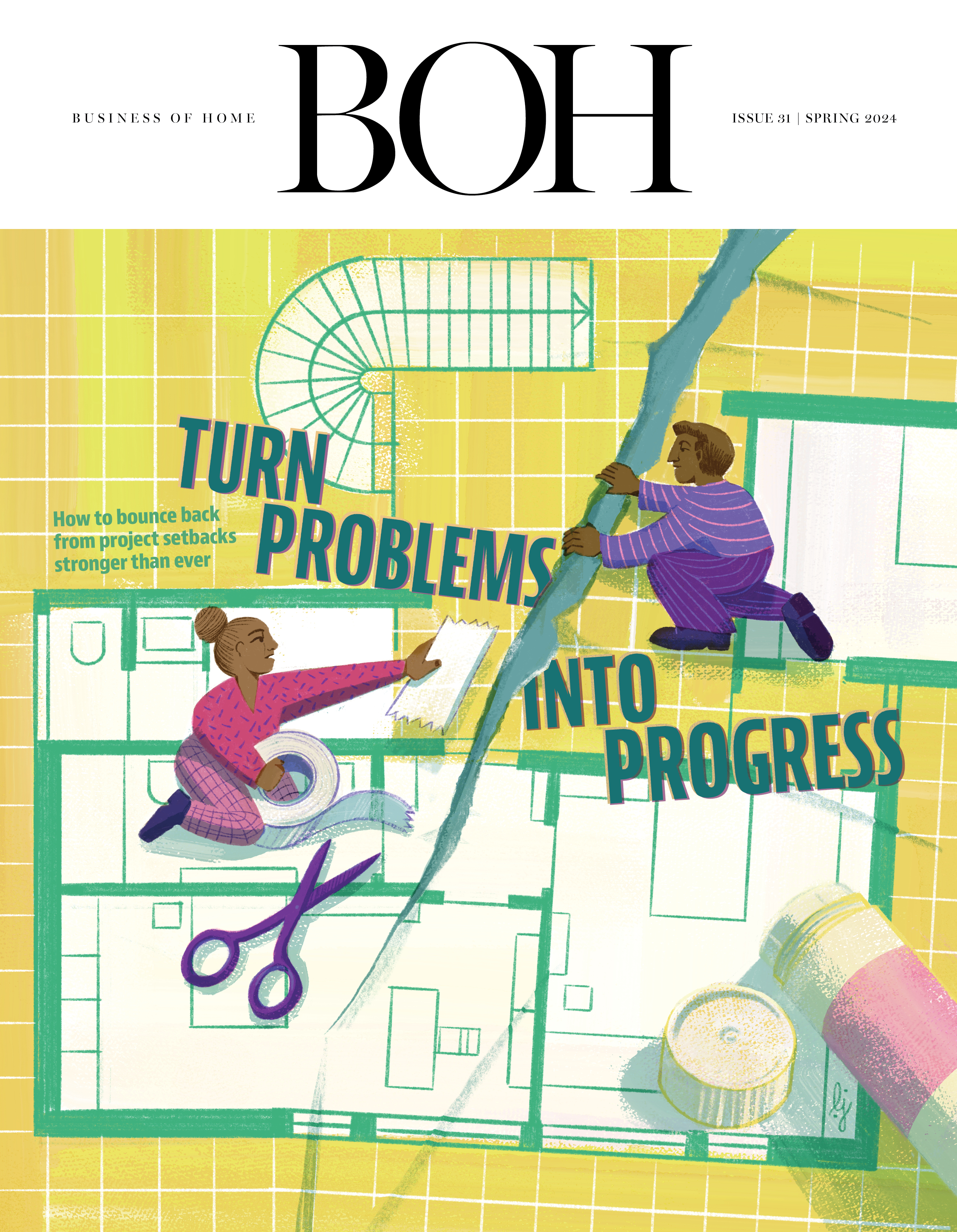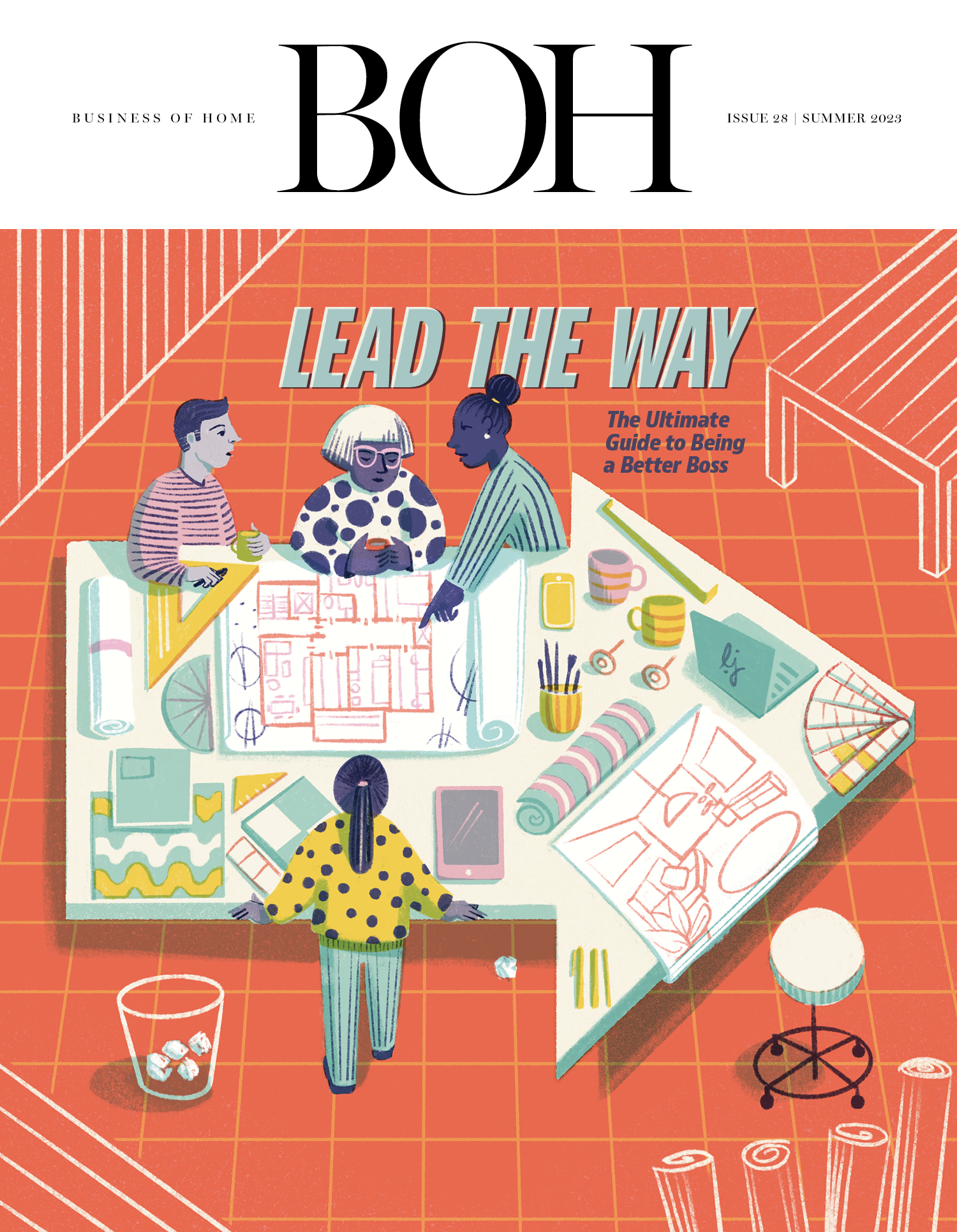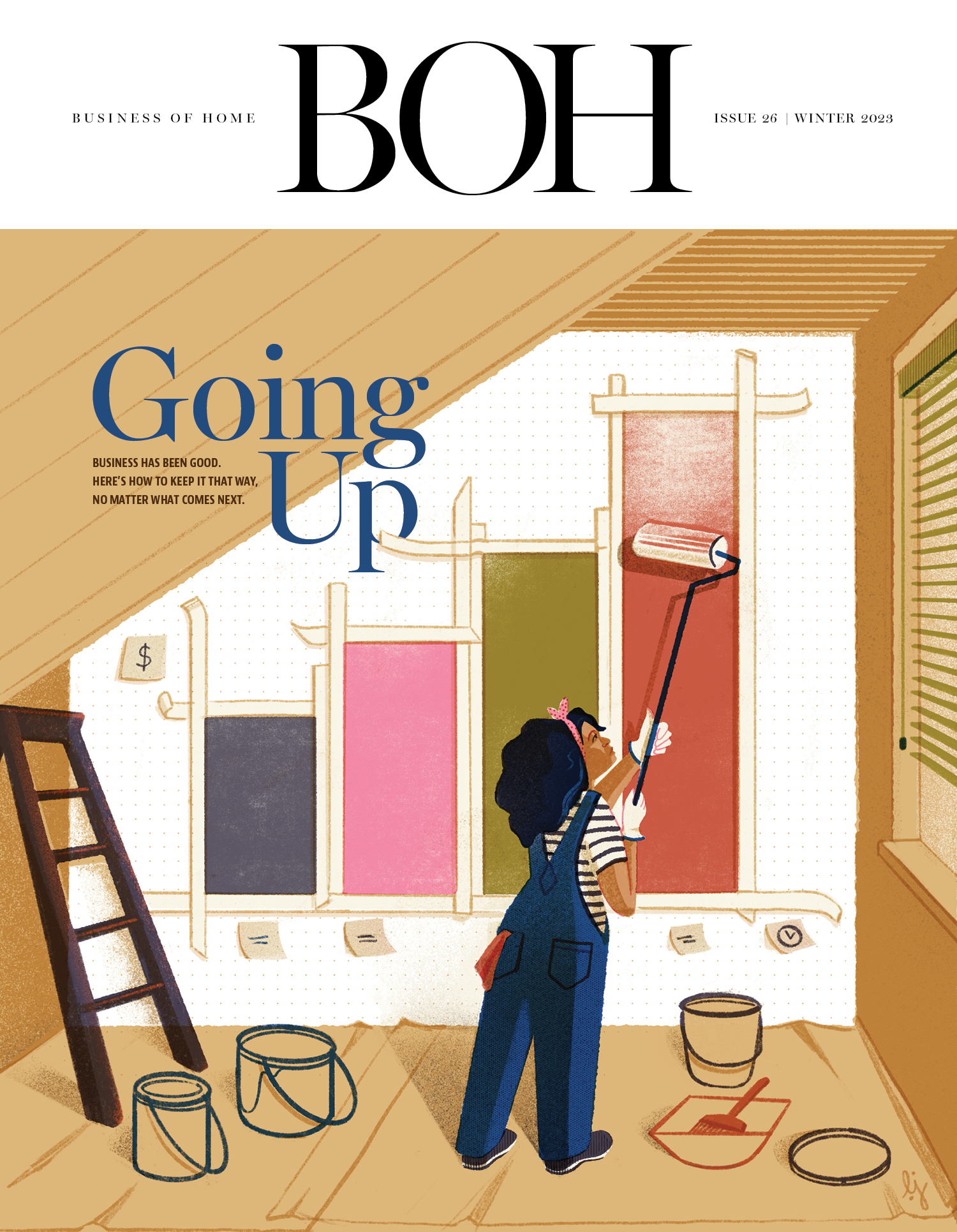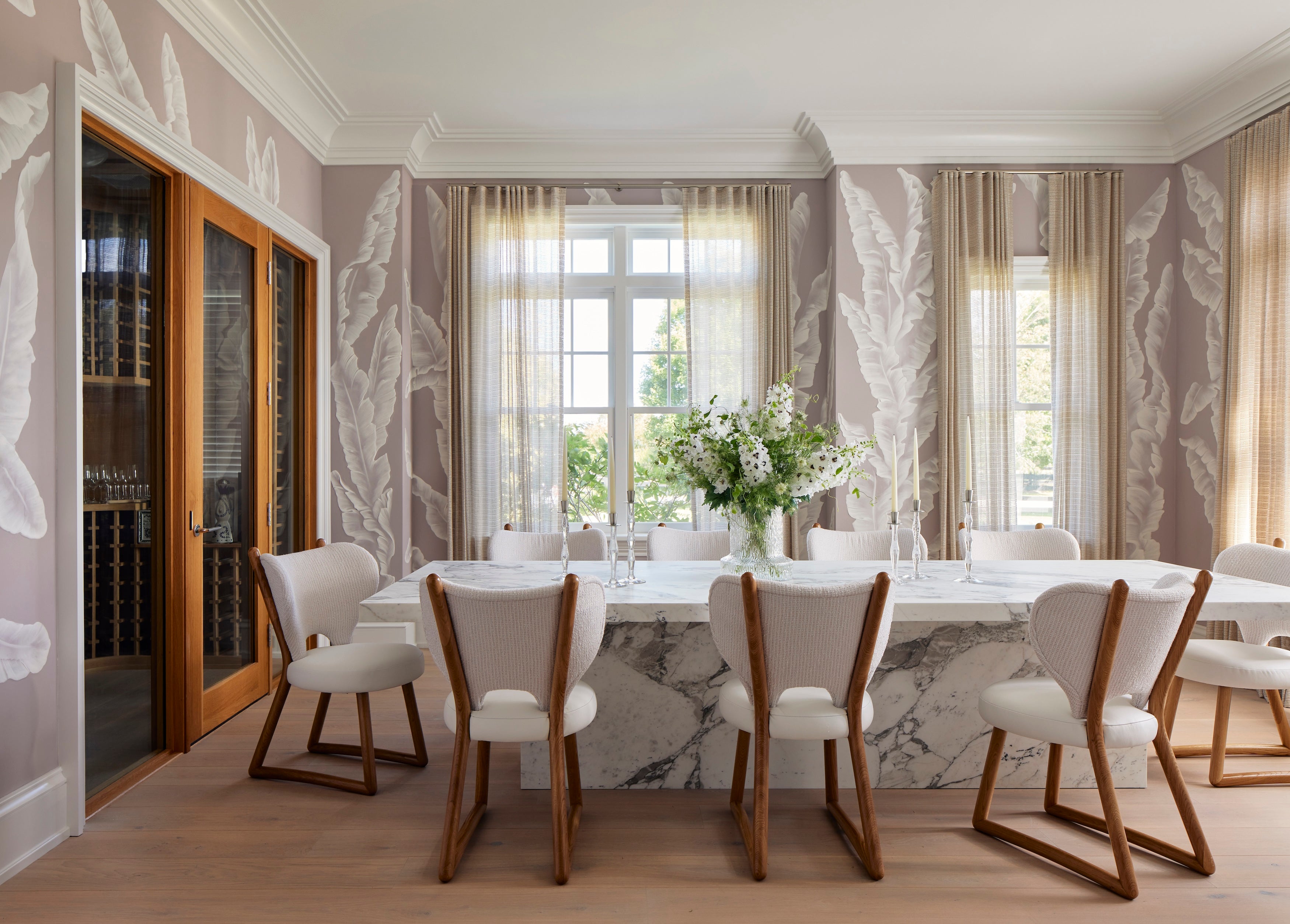It’s easier said than done, but saying no to a client’s idea can sometimes be as crucial to the project’s success as saying yes. This week, we asked seven designers—Kari Bennett, Molly Carter, Emily Del Bello, Autumn Pochiro, Emily Shron, Lauren Thomsen and Joe Waroquier—how they let clients down easy when they request something that isn’t quite right for their space.

Too Many Trends“[I will say no to client ideas] when it is not going to serve them well in the long run. A lot of clients will look through Instagram and see a perfect photo—which in reality was in fact ‘set up,’ and not in a livable way. It can trick the client in a way. I also will say no to clients’ ideas when they’re too trendy. It’s very easy to fall into a trend hole, and my goal is to create longevity for all the spaces we create so the clients can be happy for [a long] time to come.” —Emily Del Bello, Emily Del Bello Interiors, New York

Stay on Course
“As designers, we are in the business of creating. Our clients come to us with dreams, visions and ideas they hope to bring to life. Naturally, saying no to those ideas can feel counterintuitive—after all, the customer is always right, aren’t they? Not exactly. While we strive to make our clients happy, our job isn’t just to execute their ideas but to use our expertise to guide them toward the best possible outcome. Sometimes, that means saying no. A well-executed project starts with a clearly defined vision. At the outset, we work with clients to identify their goals, preferences and style direction. This becomes our project narrative: a guiding principle that ensures every decision aligns with the original vision. Let’s say a client wants a modern mountain aesthetic, and months into the project, they introduce a French country element that doesn’t fit. Instead of blindly accommodating the request, we refer back to the project narrative. Does this new idea support the original vision? If not, it’s an opportunity to gently redirect the client back on course. One of the hardest lessons I learned was not saying no when I should have. A client presented a long list of design goals, and the entire team—client, architect and contractor—agreed on a timeline that I knew was impossible. Instead of pushing back, I went along with it. The result? A project that was supposed to take one year stretched into three. The lesson? A successful project isn’t just about beautiful aesthetics; it also depends on meeting budget and timeline expectations.” —Kari Bennett, EdgeID, Salt Lake City

Listen and Pivot
“We make it a policy never to simply reject a client’s idea. Instead, we do our best to listen and understand what is motivating the proposal, and if needed, apprise clients of potential complexities or challenges we think may come up based on our experience. When a client feels strongly about an idea that we don’t think will be successful, we work through that idea in comparison with what we feel is a better design solution. We provide an outline of the strengths and weaknesses of each based on different considerations such as budget, timeline, constructability and aesthetics. Typically, this breakdown helps clients to fully comprehend the design problem within the context of the whole project, and results in a better informed but still independent client decision.” —Lauren Thomsen, Lauren Thomsen Design, Philadelphia

Explain in Detail
“This is always hard, but we recommend staying firm in saying no (in the nicest way possible and explaining why!) if the scale is wrong, the color is wrong, if it just does not work with design, or if there is a reason functionally why it does not work. I’ve dealt with this multiple times when a client finds a product that they like. You don’t want to hurt their feelings, but you need to show that you are worth the money and guide them [to a better option]. If the style doesn’t work, I like to say, ‘Let’s work with this on your next beach house or mountain home,’ depending on the style of the item. Clients always tend to agree if you take the time to explain why and offer up your expertise.” —Molly Carter, Molly Erin Designs, Placerville, California

Honesty Is Part of the Job
“I believe our job is to hear what our clients are looking for and interpret that and guide their decisions to achieve their goal. When they suggest ideas that work against the overall aesthetic or would put us in a completely different direction, I’m comfortable saying no. Also, sometimes clients will suggest things that I wholeheartedly hate and I don’t shy away from saying no. There’s a reason a client hired us—part of that is telling them what are good and bad ideas.” —Emily Shron, Shron Design, New York

Follow-Up Questions
“I don’t like the word no. That word falls into the category of ‘can’t’ for me—and ‘can’t’ shouldn’t happen in my world. After all, our clients hire us to create and achieve. There’s little room for ‘no’ and ‘can’t.’ When a client approaches me with an idea that doesn’t quite resonate with the project scope or end game, I try to understand their perspective. Sometimes the ask is innocent and they aren’t yet seeing the whole picture. So my job is to educate and communicate. Once I understand their position, I can assess it. Is it form or function? Is there something they want to integrate? How does it impact the project? How will it look? Does it affect the budget? How about the integrity of the project? If it’s going to have a negative impact, I pivot toward an alternative solution and explain why. I always have an open ear to the client and work to balance great design with what they want for their home. It’s my job to deliver a beautiful space that works for them. If the client’s idea works against that, my job is to offer alternatives. However, I also use the opportunity to see how I might work their idea into the end result. Sometimes it works and sometimes it doesn’t. But what I never do is break the integrity of the design simply to appease.” —Joe Waroquier, Joe Waroquier Home, Bryn Mawr, Pennsylvania, and Washington, D.C.

Keep a sense of Humor
“I jokingly tell my clients, ‘It’s not just a no, it’s a definite no’—especially since I have to put my name on this. Many of us, including my designer friends, often wish we could express this feeling, which is a mix of humor and frustration, to our beloved clients, who sometimes forget the reasons they hired us in the first place. Humor is a great way to ease communication and keep things lighthearted. Therefore, I like to have a few guardrails to assure myself that I don’t take a request too personally. I have to consider how the request affects the project as a whole. It’s a delicate balance of maintaining professionalism while expressing our genuine concerns about their requests and reminding them of the expertise we bring to the table.” —Autumn Pochiro, Autumn Dawn Design, Dublin, Ohio




